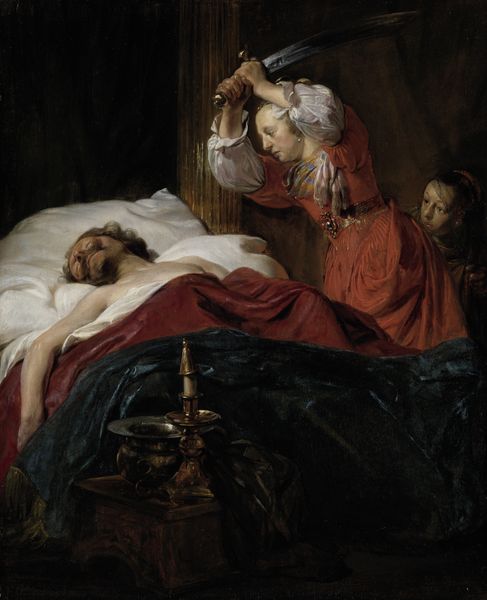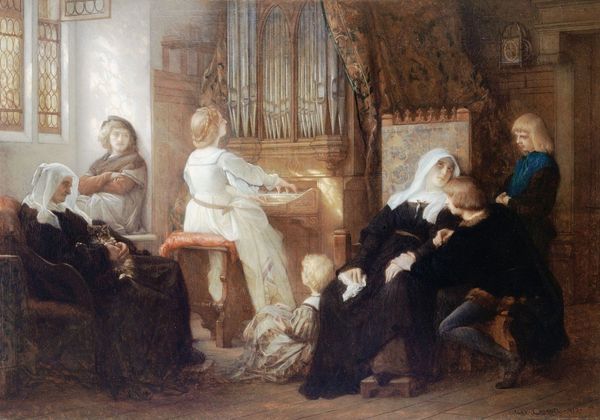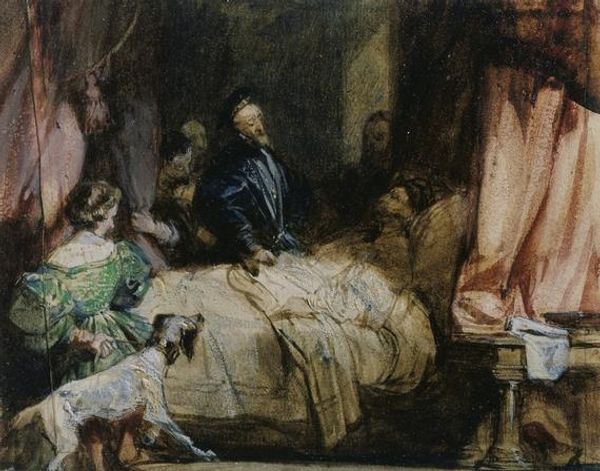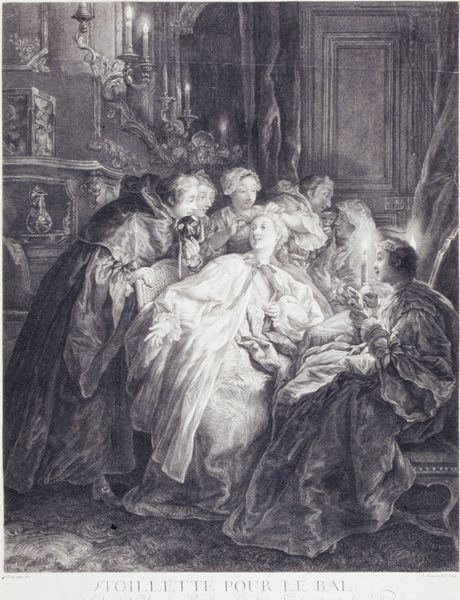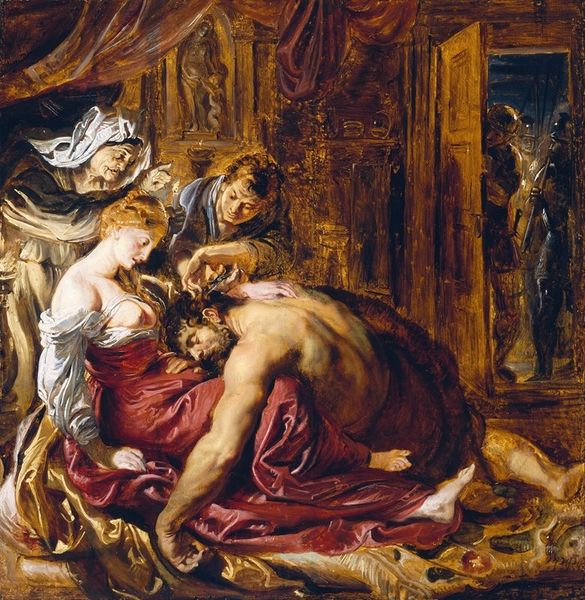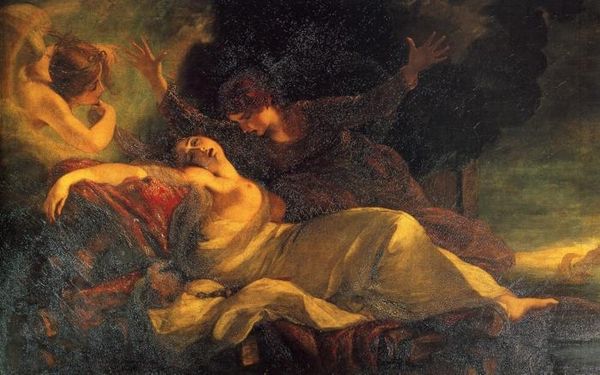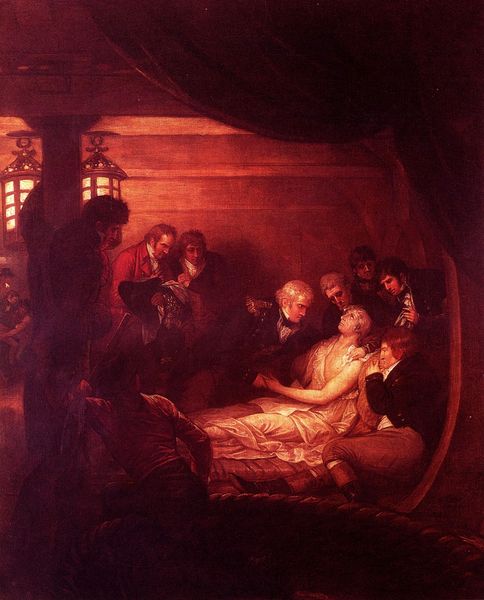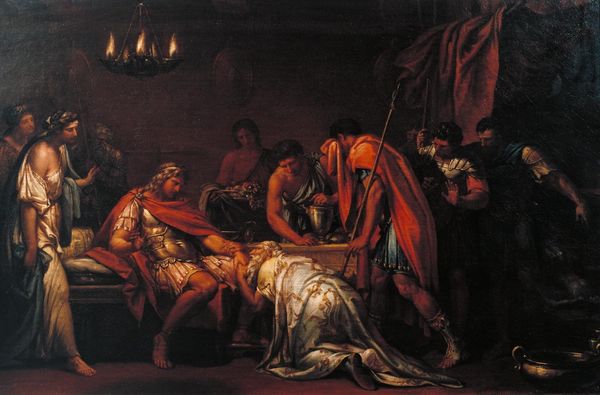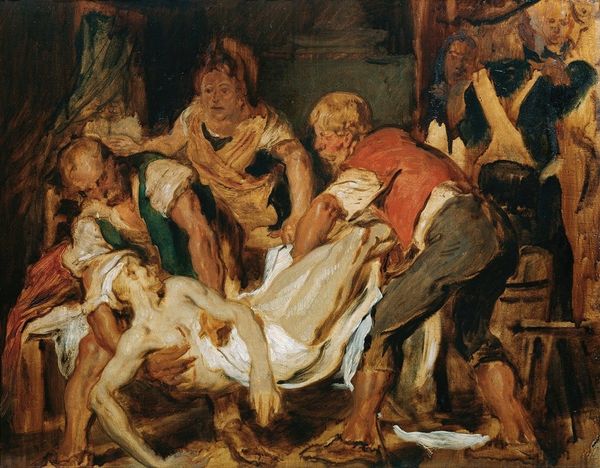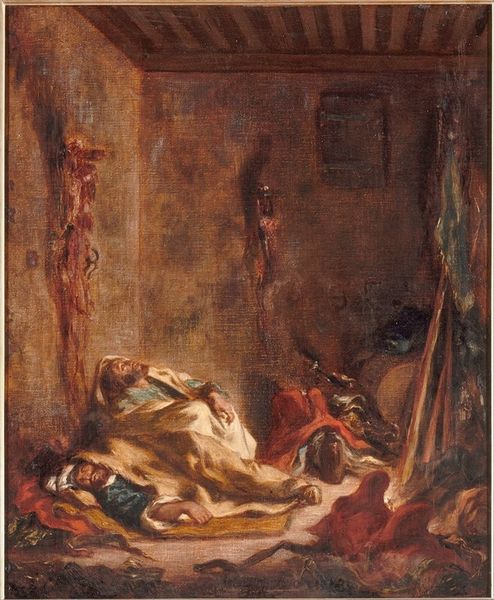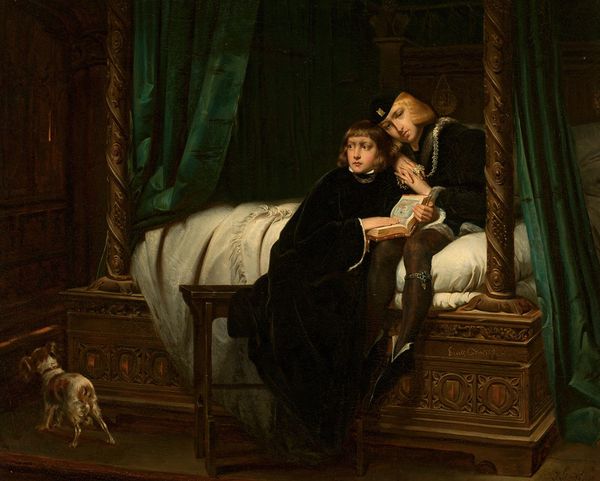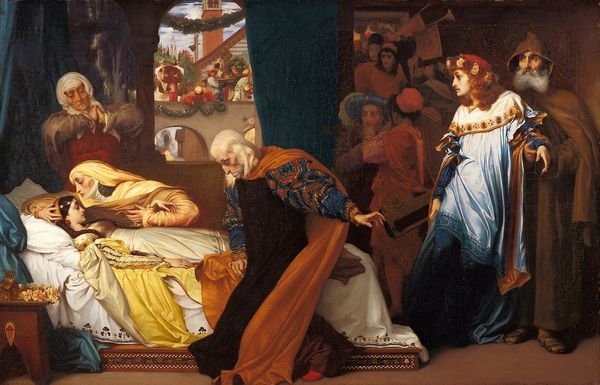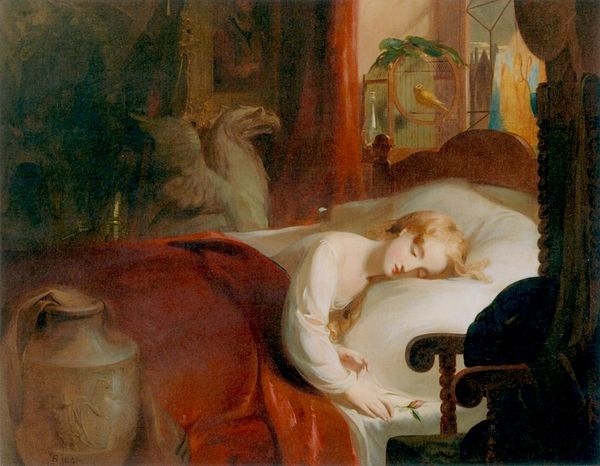
#
impressionistic
#
figurative
#
abstract painting
#
possibly oil pastel
#
oil painting
#
fluid art
#
acrylic on canvas
#
underpainting
#
painting painterly
#
mixed media
#
watercolor
Copyright: Public Domain: Artvee
Curator: Anselm Feuerbach painted "The Death of Pietro Aretino" in 1854. Look at this theatrical composition, dripping with late Renaissance aesthetics. What are your first impressions? Editor: Well, before diving into historical context, the scene reminds me of those melodramatic Renaissance plays, all velvet curtains and choked sobs. A grand spectacle of expired excess. The color palette makes me think of a bruised peach. Curator: Indeed. Feuerbach portrays the demise of Pietro Aretino, a notorious 16th-century Italian satirist, writer, and all-around provocateur. Editor: Provocateur is a mild term, wasn't he practically the original tabloid writer, shaking down princes and popes with his poison pen? So how does Feuerbach frame him? With suitable gravitas, I imagine? Curator: Exactly. This image has symbolic and political weight. Remember the social hierarchy. Aretino wasn’t an aristocrat by birth. By emphasizing the moral decay of even those who dared challenge social norms, like Aretino, artists enforced social order. Look how the upper echelons look on! Editor: Moral decay cleverly depicted in crushed velvet! But on a more immediate level, the painting makes you want to hold your breath, doesn’t it? It’s dark, heavy, a literal chokehold of emotion. But this image almost romanticizes him to some extent! He dies surrounded by people Curator: A carefully staged presentation of chaos. Aretino, known for his scandalous writings, had numerous enemies and challenging social norms came at a price during that time period.. Feuerbach’s "Death" can be seen as a cautionary reminder of that danger. Editor: The painting works then because it encapsulates something universal – that inevitable crash after a life lived flamboyantly and with utter irreverence. Curator: Exactly, this moment captures how artists like Feuerbach employed classical themes and academic skill to both reinforce established morals and also present underlying power struggles during an era that followed. Editor: Well, I must admit, contemplating all that power play while gazing at these luscious fabrics... It's quite the decadent history lesson, isn’t it? It makes you think, whose death will history commemorate—or censor—next?
Comments
No comments
Be the first to comment and join the conversation on the ultimate creative platform.
